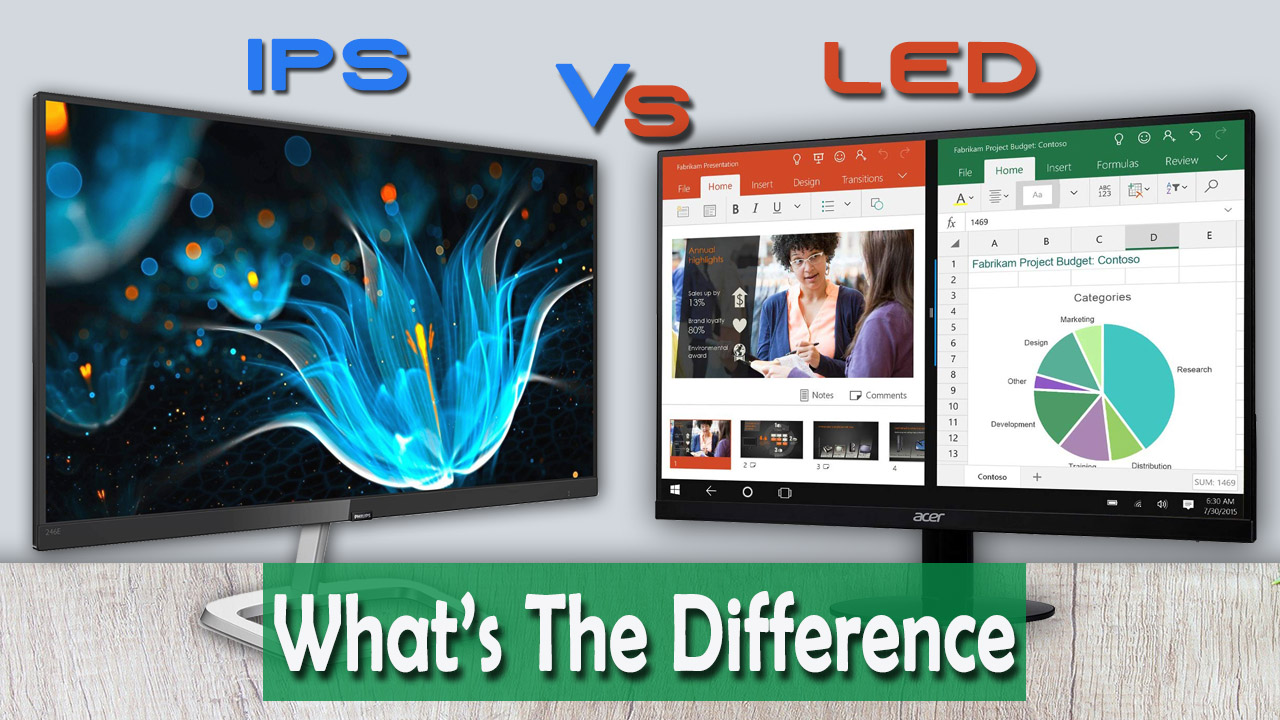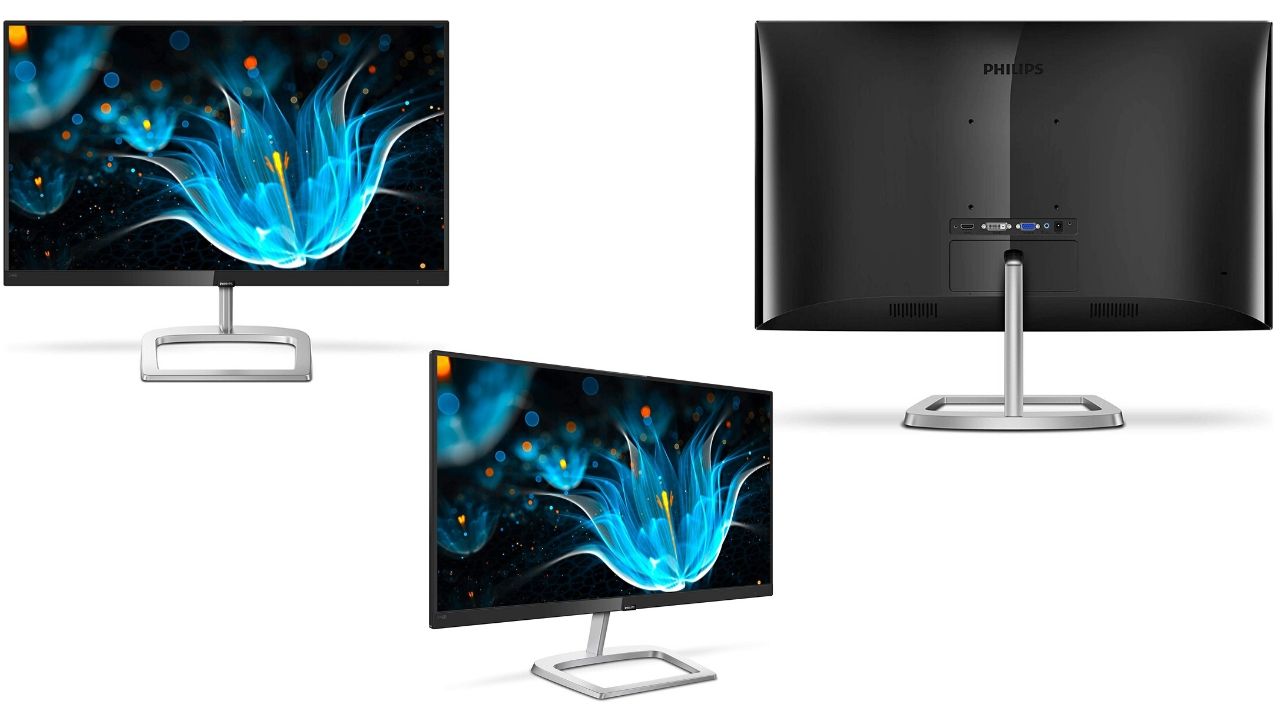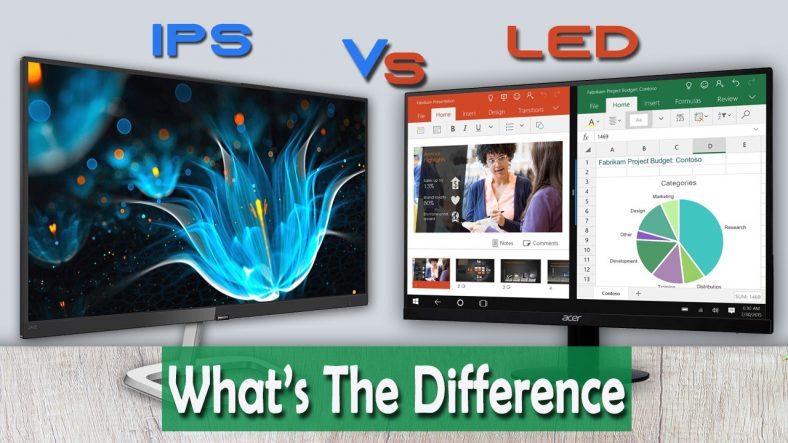Each time around, hardware manufacturers are creating even more useful and efficient devices than the existing versions of the same device. IPS monitors were considered a failure a few years ago and now they are the raging cutting edge technology of today.
Difference Between IPS Monitor & LED Monitor
A lot of people nowadays are wondering about IPS monitors and how they are different from LED monitors. There is a lot of information to absorb from different communities which makes it hard and confusing for hardware newbies to make wise decisions. In this article, we have listed the major differential factors for hardware newbies so that they can clearly understand the essentials before making their decision. So we will be discussing LED vs IPS monitor in this article.

What’s an IPS monitor?
IPS stands for in-plane switching. It is a type of LCD (Liquid Crystal Display) panel manufacturing technology. IPS panels are known to be the best at color accuracy and have large viewing angles when compared to other types of display panels. They are revered as the safe haven for graphics professionals mainly. Want to buy the latest IPS monitors for your work? Check out a few of them here.

You will feel the difference while playing games on IPS monitors as your eyes feel relaxed.
See also: LCD vs LED monitor for eyes
What are LED Monitors?
LED or Light Emitting Diodes is a type of backlight or display technology that utilizes LED to light up each pixel content. Most of the time, there is a universal backlight lighting up the while screens but each individual LED is controlled independently. Instead of refreshing the screen from left to right and top to bottom, each LED in the display panel is refreshed at the same time. Want to buy the latest LED monitors? check out a few recommended here.

This technology is used in monitors because they take up less energy and offer brighter screens. LEDs are also known for their phenomenal refresh speeds and seamless response times. A light diffuser is placed between the light source and the array of LEDs in order to make the source of light more uniform across the whole screen.
Key Differences between IPS Monitors and LED Monitors
To make an informed decision on which type of monitor to buy, it is important for you to know about the differences between both types.
Technology
The main difference between both of these monitors is their technologies. IPS Monitors are based on LCDs while LED Monitors have a large array of individually controllable LEDs. Both of these technologies are useful based on the users’ preferences and needs.
Response Time
IPS Monitors have a longer response time of about 10ms. Even though 10ms isn’t that long but for some of the more fast-paced online games like Battlefield 5, Fortnite, PUBG, and others. it will create a noticeable difference and could cause the player to react slower. It is a well-established fact that a higher refresh rate allows players to react faster and perform better in fast-paced FPS (First-Person Shooter) games.
LED Monitors, on the other hand, don’t have this issue and you can even find some LED Monitors that have refresh rates as high as 144Hz. The Latest LED gaming monitors by Asus can go to an even higher refresh rate of 240Hz.
Power Consumption
IPS Monitors take up more power as they have to deliver high-quality images at a very high resolution and brightness. On the other hand, LED Monitors to consume less power even though they may show brighter screens than IPS Monitors. This is because the LEDs used in LED displays consume very little power altogether when compared to the total power consumption of an LCD.
Display Sizes and Viewing Properties
Another key difference between the two is that LED screens can be much thinner and are brighter while IPS screens are quite thick in depth. However, IPS panels have a higher color accuracy and image quality and they have extremely large viewing angles on all directions. A typical above-average IPS monitor has a viewing angle of 178° from all directions.
Image Quality
IPS Monitors deliver clear and crisp images through their vibrant colors. They give us a better quality image than LED Monitors. As LED Monitors have normal image quality and can’t battle with the IPS Monitors in this area.
Price
IPS Monitors are without a doubt, way more expensive than LED monitors. People who are into content creation, video editing and image editing invest in IPS Monitors as it gives clear and crispy images for an accurate edit.
The main reason for the difference is that LEDs are extremely cheap to manufacture and companies like Samsung and LG have refined their manufacturing process and made it even cheaper. LCD takes much more time to manufacture and has a more complicated manufacturing process.
Heat Generation
IPS Monitors not only require more power to work but also produce more heat than LED monitors. In fact, even with all the bright lights LED monitors are generating, they still boast the least heat production among a large variety of panel types.
Conclusion:
Both of the displays technology differ greatly from each other and are designed specifically for finite portions of all computer users. People who need the most accurate color production and highest-quality images should definitely invest in an IPS display while fast-paced gamers and people with a small budget would do best with an LED monitor.
Stay tuned with the LaptopReviewPro blog for more informative articles like this.
